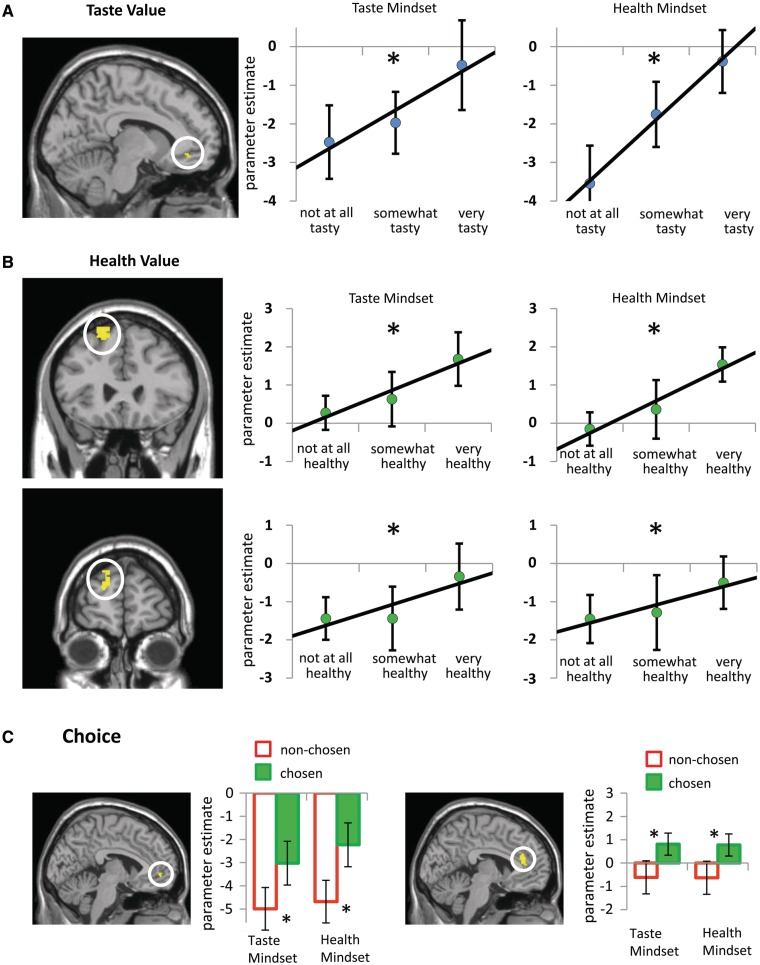Fig. 3.
Neural regions related to (A) Taste Value, (B) Health Value and (C) Choice that are insensitive to Mindset. (A) MOFC parametrically relates to Taste Value across Mindset conditions (Taste Mindset Taste Value and Health Mindset Taste Value conjunction, P < 0.005, 34 contiguous voxels). Charts on the right illustrate parametric relations with value in terms of taste by showing activation parameter estimates for foods rated low (rated two or lower), middle (rated three) and high (rated four or higher) on tastiness. (B) LPFC regions parametrically relate to value in terms of health across Mindset conditions (top: BA 8; bottom: BA 9; Taste Mindset Health Value and Health Mindset Health Value conjunction, P < 0.005, >34 contiguous voxels). Charts to the right of each brain image illustrate parametric relations to value in terms of health by showing activation parameter estimates for foods rated low (rated two or lower), middle (rated three) and high (rated four or higher) on healthiness. A ‘asterisks’ and solid line indicates that the parametric relationship is significant based on the criterion for the parametric modulation analysis (P < 0.005, >34 contiguous voxels). Ratings were categorized as low, middle or high to visualize the parametric relations, but no statistical tests were conducted based on the categorical estimates. (C) MOFC and DACC activity is greater for chosen than nonchosen foods across Taste and Health Mindset conditions. Maps show neural association with choice conjunction analysis (Taste Mindset Chosen vs Taste Mindset Non-chosen conjoined with Health Mindset Chosen vs Health Mindset Non-chosen, P < 0.005, >34 contiguous voxels). Bar charts to the right of each brain image show activation parameter estimates for chosen and nonchosen foods in each condition. ‘asterisks’ indicates a significant difference between parameter estimates for chosen and nonchosen foods. Error bars represent standard error.

